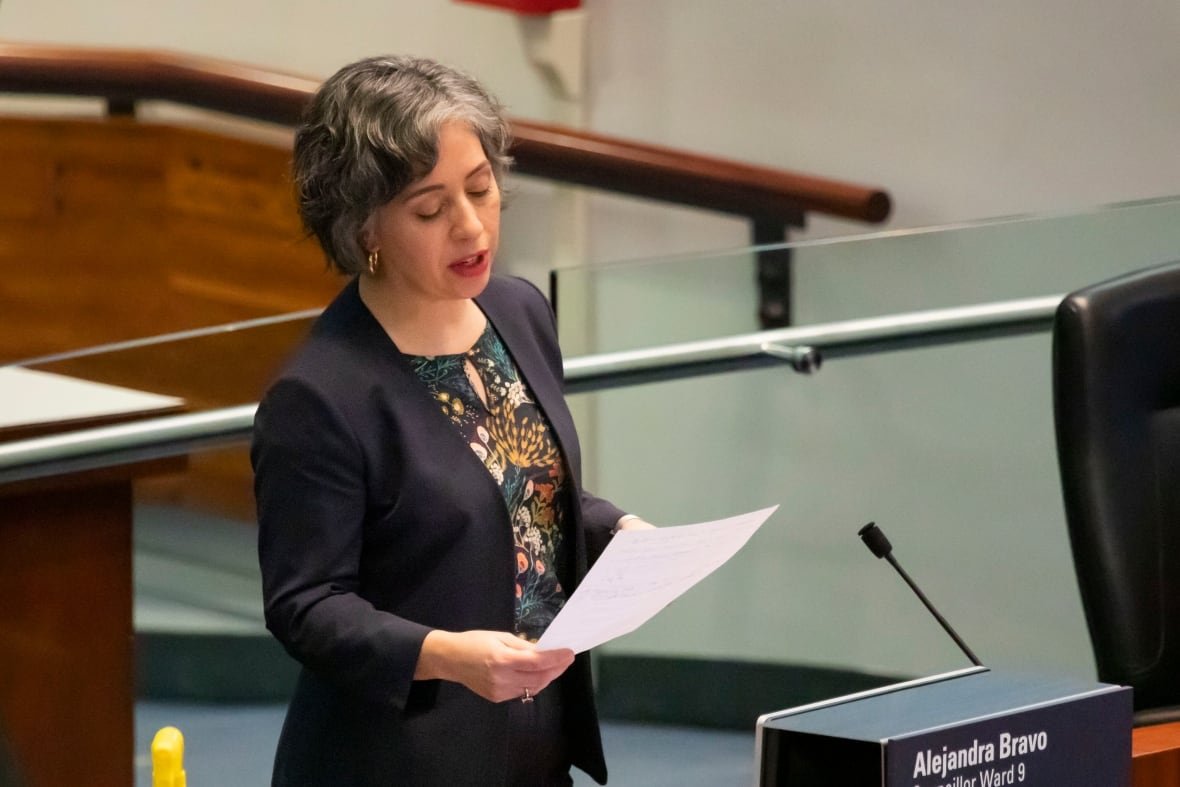Toronto could soon see a plan to address the growing number of rats in the city as major construction projects and climate change contribute to its pest problem.
Late last month, Toronto’s city manager Paul Johnson outlined a rat response plan that would focus on environmental changes to minimize the conditions for rats to thrive in. Johnson will present the plan to the economic and community development committee at its next meeting on July 9.
Coun. Alejandra Bravo, who was one of the councillors to ask the city to create the strategy, says she’s been hearing from families who live near construction sites and have been impacted by the rodents.
“We got a call from a mother who lives in an apartment close to a construction area. Her daughter was awoken in the middle of the night as a rat jumped onto her bed in her bedroom,” Bravo said at a news conference Wednesday.
“Can you imagine what that does to a family?”
Last year, the city’s infrastructure committee directed the city manager and medical officer of health to report back with a rat response plan by this summer.
If approved, the plan will include several actions, such as a response coordination team and a response enforcement table to lead work within the public service through inspection and enforcement blitzes.
Toronto’s rat population is growing faster than the rodents of New York City, Chicago or Amsterdam, according to a new study. CBC’s Tyreike Reid shows us climate change may be a contributing factor.
As part of the new plan the city says it will need an associate director and a project coordinator starting in 2026, at a price tag of $351,000. It says an additional $150,000 will be required annually to support public communication and staff training related to rat management.
Global warming impacting growing rat populations: study
In January, a study from a group of global rodent and public health scientists found growing rat populations are correlated with rising temperatures driven by global warming.
Last summer, councillors asked Johnson to consult with other North American cities on their approach to rat reduction.
Bravo said Wednesday the new plan would bring Toronto in line with other major North American municipalities that have a coordinated approach to managing rats, like New York City and Chicago.
Bobby Corrigan, a world-renowned rat expert and the lead instructor of the Rat Academy for pest control in New York City, said Toronto’s rat response plan is a “very well done strategy.”
“I think what stands out for me as I read through each page is the fact that they realize the emphasis needs to be on a whole holistic approach, especially looking at the environment of the city, instead of thinking how many exterminations should we do or how much poison can we put out to kill the rats,” Corrigan told CBC Radio’s Metro Morning on Friday.
One of the strategies implemented in New York City to fight against the rats was a rat pack, a group of anti-rodent activists to help in city mitigation efforts.
Corrigan said the rat pack is “one of the most important things that a city can do.” He said the rat pack is successful due to community engagement.
“Being part of the Rat Pack can really get people motivated and engaged, excited, and that’s the key. You can’t depend on a big city to solve a big problem. You got to get everybody involved,” he said.
Bravo says some of the complaints she’s received from businesses and tenants stress that the cost of getting rid of the rats is also a problem.

“It’s really expensive to get rid of rats in a business or in a home. Not everybody has access to that, but the toll on people, the mental health toll, the fear, is all too real,” said Bravo.
This isn’t the first time city council has tried to tackle Toronto’s rat problem.
In 2018, former councillor Ana Bailão spearheaded a push for staff to create a rat reduction plan. That was adopted by council, but work on the report was scuttled by resource constraints during the pandemic.
Councillor calls on Metrolinx to implement measures
On Monday, Coun. Paula Fletcher sent a letter to Bravo and the community development committee, urging the city to request that Metrolinx also implement “rodent mitigation measures.”
Fletcher said people have reached out to her with concerns about rodent infestations in and around their homes following the Ontario Line construction. The 15.6-kilometre subway line will run from Exhibition Place through downtown to the Ontario Science Centre. Construction began in December 2021 and is expected to be complete in 2031.
“It is known that construction activity can displace rodents, making it essential for mitigation measures to be a standard component of Metrolinx’s Construction Management Plan,” said Fletcher in the letter.
She said residents in the area are already facing disruptions due to 24-hour construction, adding the current pest control process is reactive and difficult for residents to access.

Metrolinx should prioritize the health and well-being of residents by implementing rat prevention measures for transit projects, Fletcher said in the letter.
In a statement to CBC, Metrolinx said it is formalizing efforts already underway for a rodent management plan that will provide clarity to homeowners and businesses near its work sites.
“Members of our community engagement team work with our project team to assess each case and determine next steps and potential supports, however the costs must be reasonable, as we have a responsibility to ensure public funds are used efficiently,” Metrolinx said in a statement Thursday.
Metrolinx said supports vary based on each case, but have included hiring pest control services who work with homeowners to identify vulnerable areas on the property, remove potential entry points into buildings, and provide control measures.


